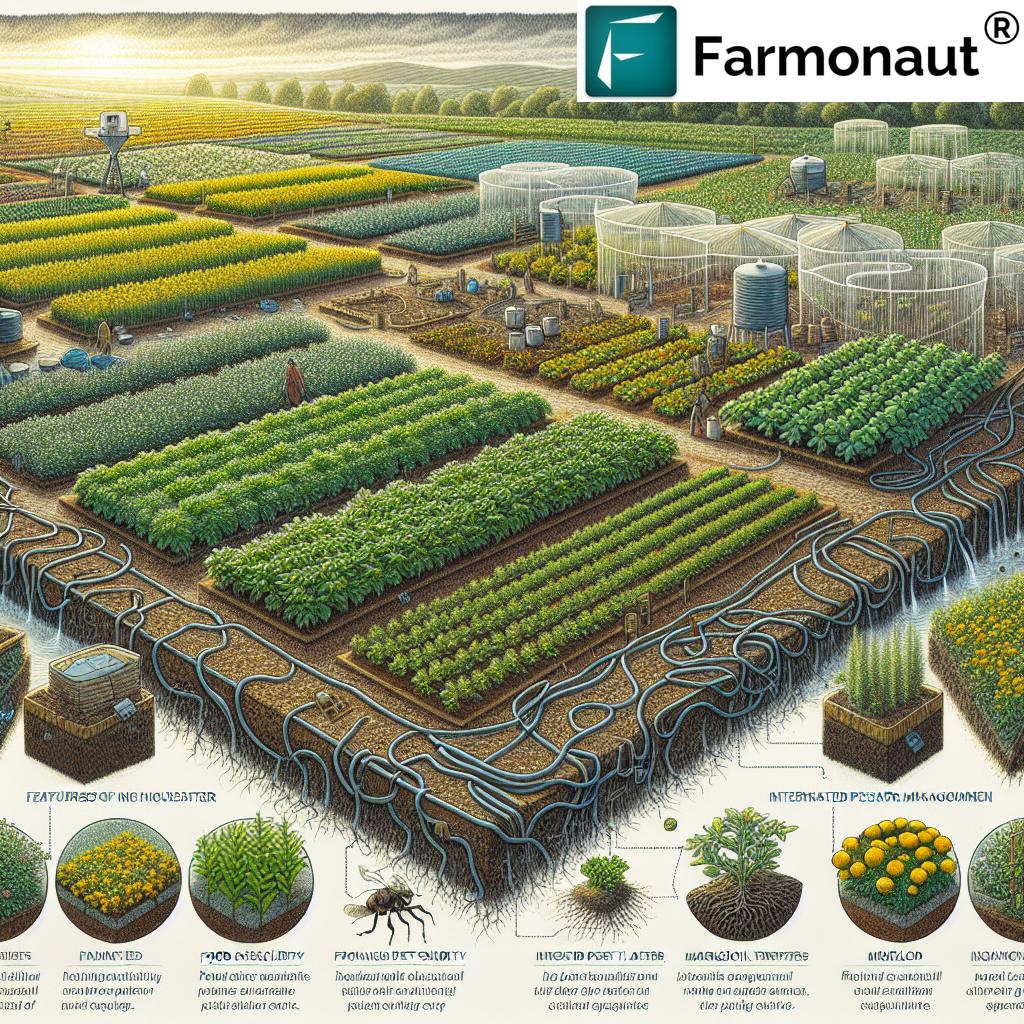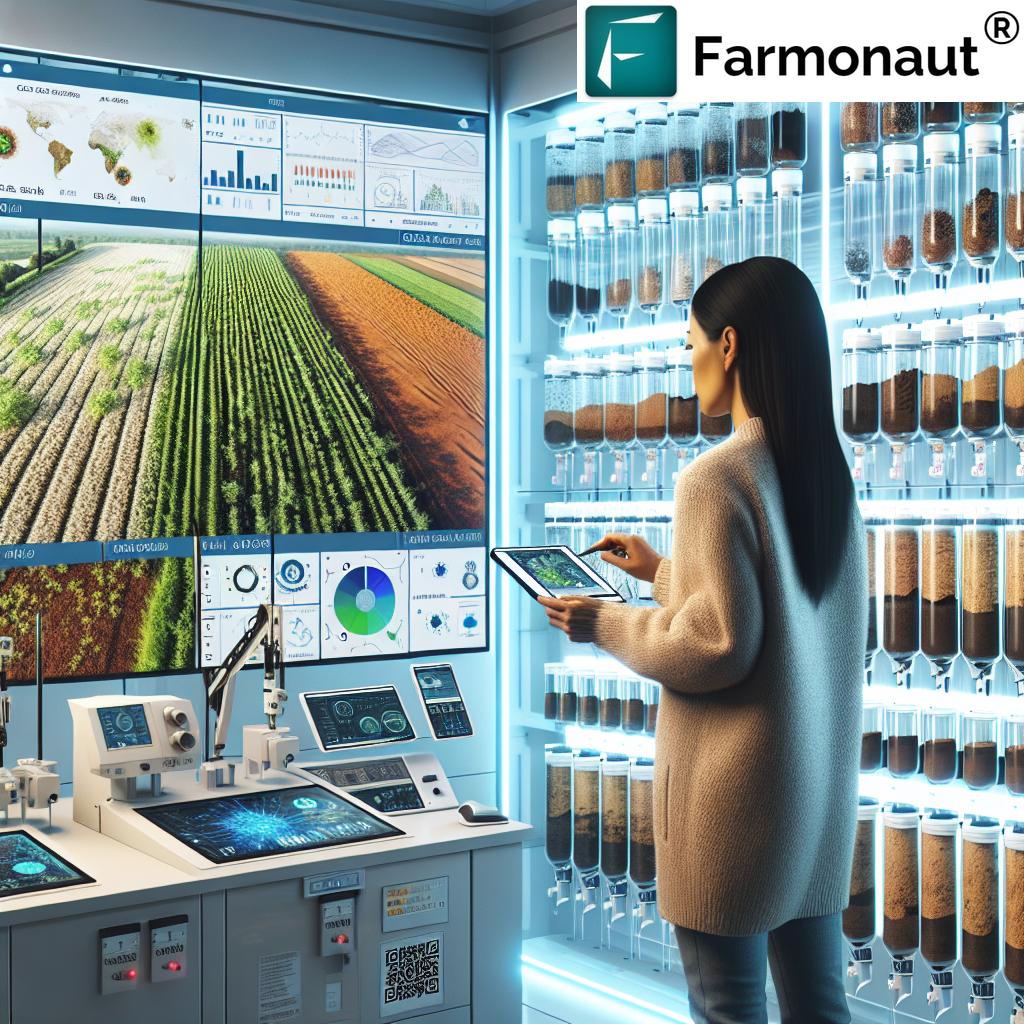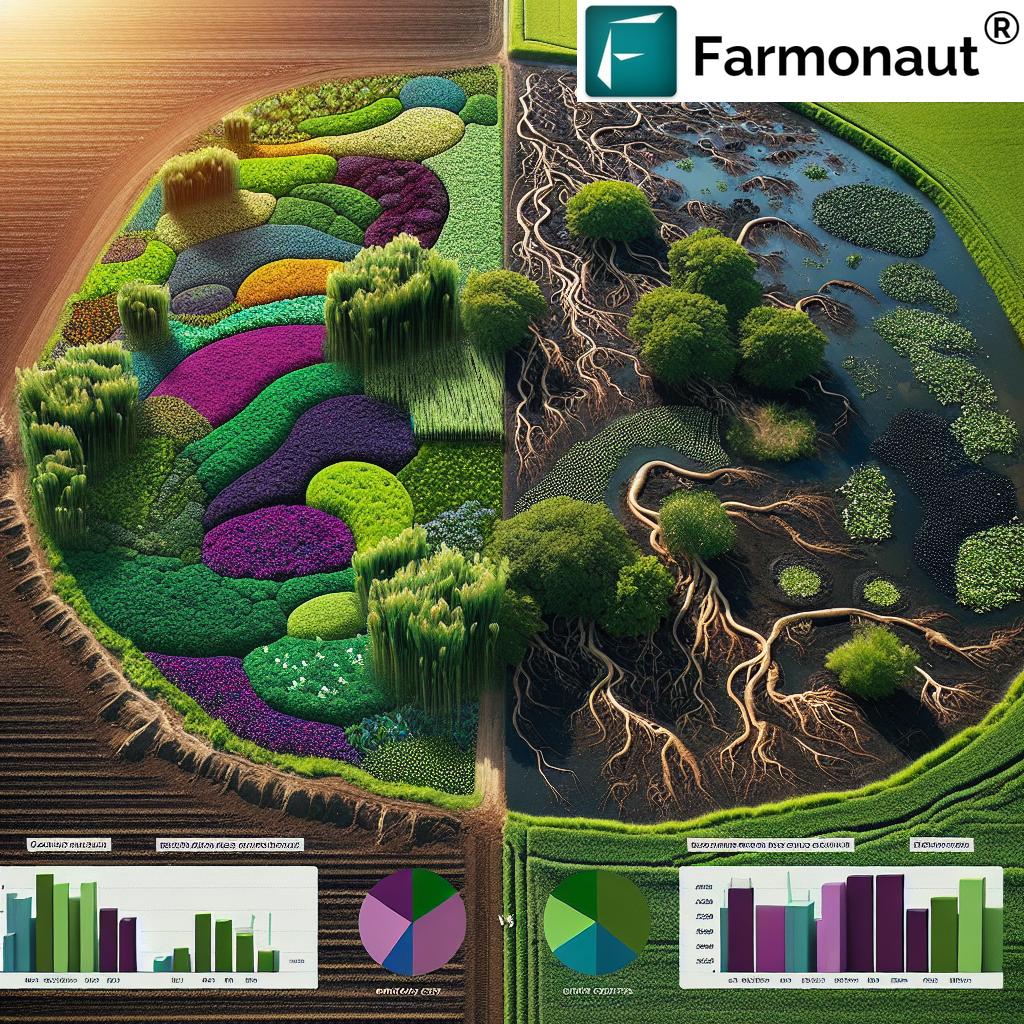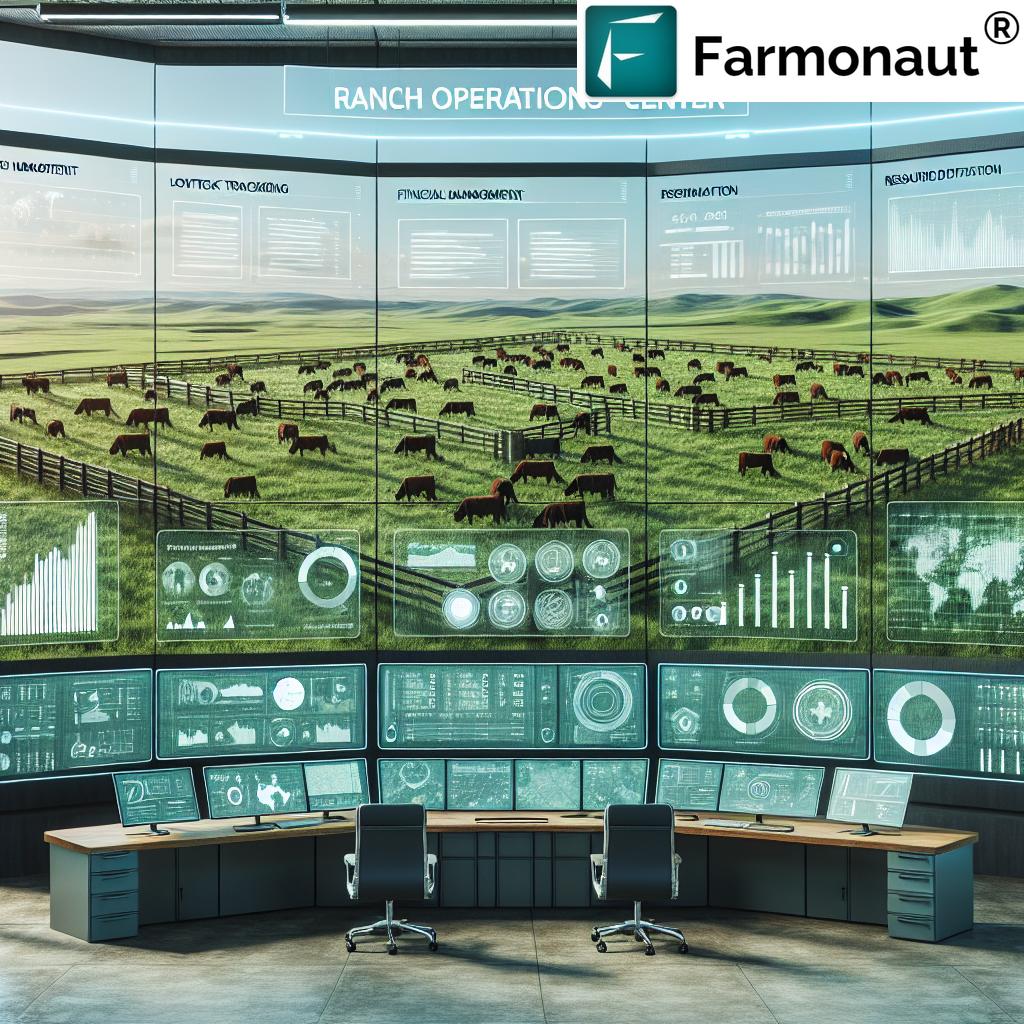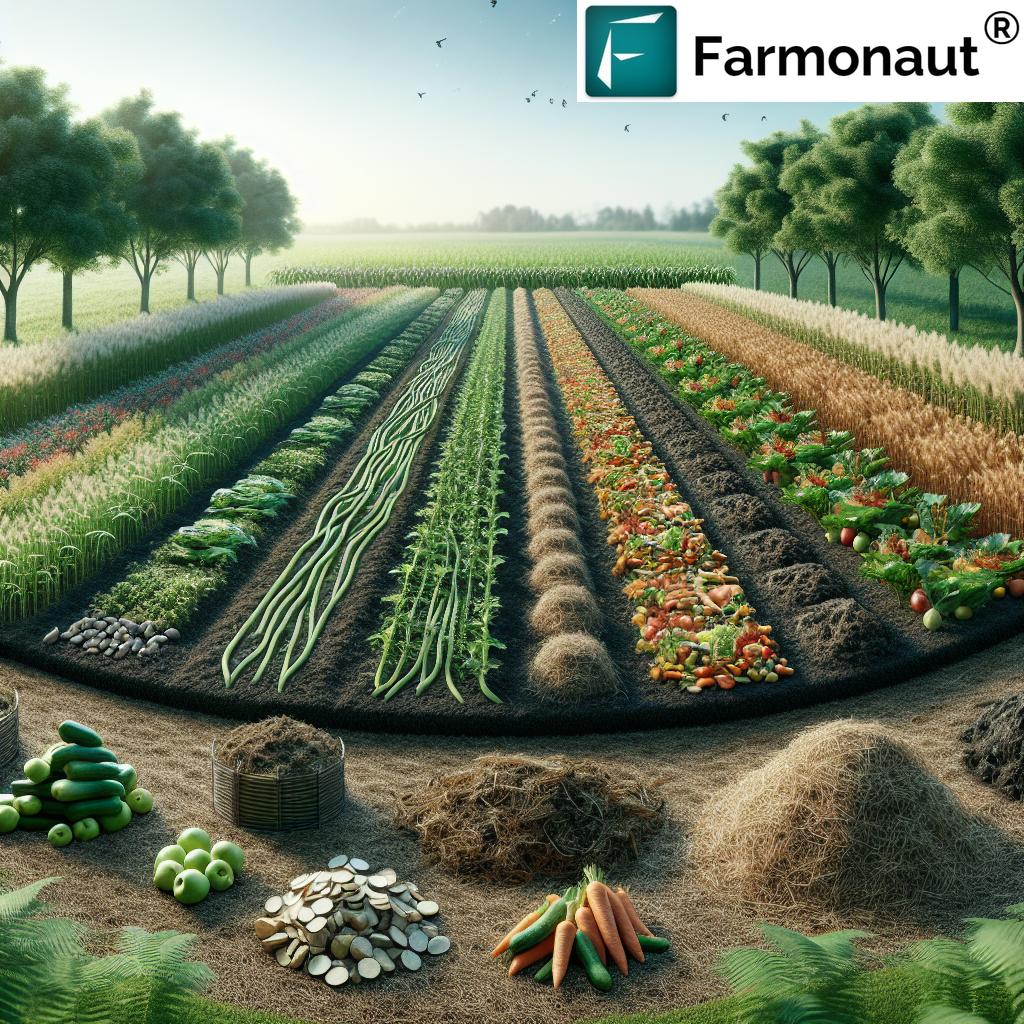What Is Sustainable Agriculture? 7 Secrets You Must Know
“Sustainable agriculture can reduce water usage by up to 50% compared to conventional farming methods.”
Introduction: Understanding Sustainable Agriculture
As we navigate the ever-growing demands of our world, embracing sustainable agriculture has never been more critical. But what is this approach, and why should it concern us all? Sustainable agriculture is a holistic approach to farming that seeks to meet today’s food and textile needs without compromising the ability of future generations to meet theirs. It integrates three main objectives: environmental health, economic profitability, and social equity. By harmonizing these elements, we can cultivate an agricultural system that is productive, resilient, and responsible.
Sustainable agriculture isn’t just about growing crops—it’s a system that balances conservation of resources, biodiversity, reduced chemical input, climate change mitigation, and community health. With challenges like growing populations, climate variability, and resource scarcity, adopting sustainable farming practices is not just ideal but essential.
Let’s delve into the core principles and the 7 secrets that make sustainable agriculture a game-changer for soil health, water conservation in agriculture, increased biodiversity, and more!
Principles of Sustainable Agriculture
At the core of sustainable agriculture lie time-tested principles blending science, stewardship, and society. Let’s examine the pillars guiding our journey toward a sustainable agricultural future:
1. Conservation of Resources
-
Efficient Use and Conservation of Natural Resources: Sustainable agriculture emphasizes protecting and judiciously managing our resources—soil, water, and energy.
- Crop rotation, cover cropping, and reduced tillage help maintain soil health, prevent erosion, and reduce chemical dependency.
- Efficient water management techniques, including rainwater harvesting and drip irrigation, conserve water and mitigate depletion risks—especially vital in drought-prone areas.
2. Biodiversity in Farming
- Enhancing ecosystem resilience and productivity: By cultivating a diverse range of crops and livestock breeds, we reduce reliance on single species vulnerable to pests and diseases.
- Agroforestry techniques—integrating trees within and around agricultural land—not only promote ecological balance but also diversify income for farmers.
3. Reduced Use of Chemical Inputs
- Minimizing chemical pollution and promoting healthier ecosystems: We favor organic fertilizers, compost, and organic pest control methods such as biological pest predators over synthetic chemicals.
- This approach improves water and air quality, reduces environmental impact, and makes farm products safer for consumption.
4. Climate Change Mitigation in Agriculture
- Agriculture is both a victim and a contributor to climate change.
- By adopting practices such as no-till farming, cover cropping, and agroforestry, we can maintain more stable soils rich in organic carbon—reducing greenhouse gas emissions and mitigating climate change.
7 Secrets of Sustainable Agriculture: Key Sustainable Farming Practices
Now that we’ve covered the principles, let’s unravel the “7 secrets” — the key sustainable farming practices that revolutionize soil health, water conservation, biodiversity, and more.
1. Crop Rotation and Crop Diversity Benefits
- What is it? The practice of growing a sequence of different crops on the same land over several seasons, as opposed to monoculture (one crop only).
- Why? This disrupts pest lifecycles, reduces disease spread, enhances soil health management, and requires fewer chemical inputs because specific pests and diseases don’t build up.
- Benefits:
- Improves soil structure and fertility
- Boosts biodiversity by supporting varied organisms
- Minimizes the need for synthetic fertilizers and pesticides
- Reduces soil erosion and nutrient depletion
- Example: Rotating cereals with legumes (like wheat and beans).
2. Cover Crops and Perennials: Protecting and Building Soil Health
- Cover crops (such as clover, rye, vetch) and perennials are planted when fields would otherwise be bare.
- Benefits:
- Prevent soil erosion
- Increase organic matter and improve soil health
- Replenish nutrients naturally
- Control weeds, thus reducing herbicide use
- Soils stay covered and living roots persist, greatly enhancing resilience to drought and heavy rain.
“Healthy soil from sustainable practices can increase crop yields by 20% while boosting biodiversity on farms.”
3. Reduced or No-Till Farming Methods
- Traditional tillage disrupts soil, leading to compaction, erosion, and loss of organic matter.
- No-till or reduced-tillage practices involve planting seeds directly into undisturbed soils, sometimes with minimal residue removal.
- Results:
- Decreases soil erosion
- Promotes better soil structure, water infiltration, and carbon sequestration
- Lowers inputs and improves long-term farm profitability
4. Integrated Pest Management (IPM) and Organic Pest Control Methods
- IPM combines biological, mechanical, and targeted chemical interventions to keep pest populations under control.
- Key components:
- Monitoring pests and natural enemies
- Using biological control methods like introducing pest predators
- Applying targeted, minimal chemical intervention only when necessary
- Using crop rotation and habitat management to disrupt pest cycles
- Organic pest control methods can include pheromone traps, neem oil sprays, or beneficial insects.
5. Agroforestry Techniques Increase Biodiversity in Farming
- Agroforestry is the integration of trees and shrubs within or around agricultural farms.
- This strategy protects crops, provides habitats for wildlife, and can:
- Reduce wind or water erosion
- Improve soil fertility through leaf litter and nitrogen fixation
- Offer farmer income through fruits, nuts, timber, or firewood
- Enhance biodiversity in farming and increase ecosystem resilience
6. Water Conservation in Agriculture: Drip Irrigation, Rainwater Harvesting & More
- Efficient water management underpins sustainable farming’s success.
- We advocate drip irrigation systems to deliver water directly to plant roots, minimizing waste and saving labor.
- Rainwater harvesting collects and stores seasonal rain for dry periods, reducing over-extraction from other sources.
- Healthy soils from organic practices retain more moisture, further conserving water.
- Technologies for satellite-driven irrigation monitoring are now accessible (see
Farmonaut’s Large Farm Management platform).
These tools optimize water scheduling and adapt to local conditions, facilitating cost-effective and efficient agricultural water management.
7. Climate Change Mitigation: Soil Carbon Sequestration and Resource Management
- Healthy soils are a carbon sink. By reducing tillage, increasing organic inputs, and incorporating trees, we enhance soil carbon content and reduce emissions.
-
Tracking a farm’s carbon footprint is crucial. Precise solutions like the
Farmonaut Carbon Footprinting Tool enable farmers and agribusinesses to monitor, report, and reduce emissions efficiently, helping in regulatory compliance and environmental stewardship. - Such climate change mitigation in agriculture is key to long-term sustainability and global climate goals.
Benefits of Sustainable Agriculture
The rewards of committing to sustainable agriculture reach far beyond the farm gate—enriching our environment, society, and future prosperity. Let’s explore:
Environmental Benefits
- Reduced reliance on synthetic chemicals, lowering air, soil, and water pollution.
- Enhanced biodiversity: Crop rotation and diversified cropping foster habitats for pollinators, wildlife, and beneficial insects, promoting ecosystem resilience.
- Improved carbon sequestration through organic matter build-up and tree planting, helping to mitigate climate change.
- Healthier soils supporting diverse microbial communities and higher productivity.
Socio-Economic Benefits
- Increased resilience and profitability: Sustainable practices build resilient farm businesses by stabilizing production and reducing dependency on costly chemical inputs.
- More jobs and rural development: Sustainable operations often require more labor, reducing rural unemployment and supporting local economies.
- Long-term cost savings: Lower input and waste management costs boost farm profitability over time.
- Food security: Diversified, local production ensures stable supplies of healthy, nutritious foods, even during supply disruptions.
- Social equity: A more balanced approach to resource sharing, land access, and rural opportunity.
Other Sustainable Agriculture Advantages
-
Blockchain-based traceability: Technologies like
Farmonaut’s Product Traceability build supply chain transparency, reduce fraud, and boost consumer confidence in sustainable food and textiles. -
Access to crop loans and insurance: Verified agricultural data, such as that powered by
Farmonaut’s Crop Loan & Insurance Solutions, enables easier and fairer access to financial products for farmers. -
Fleet management: Optimizing farm machinery utilization via
Farmonaut Fleet Management improves cost efficiency and safety for large-scale and high-tech sustainable farms.
Benefits and Challenges of Sustainable Agriculture Practices
| Sustainable Practice | Estimated Impact on Soil Health | Estimated Water Conservation (%) | Effect on Biodiversity | Key Challenge | Example |
|---|---|---|---|---|---|
| Crop Rotation | Improves by 30% over 5 years | 10–20% | High (fosters diversity of insects and microbes) | Requires planning and farmer knowledge | Rotating wheat with legumes |
| Cover Cropping | Boosts organic matter by 15% in 3 years | 20–35% | Medium (supports pollinators, suppresses weeds) | Additional planting and management time | Planting rye or clover after harvest |
| No-Till/Reduced Tillage | Reduces erosion up to 90% | Improves water retention by 30% | Moderate (favors soil organisms) | Investment in specialized seeders | Direct seeding into last year’s residue |
| Integrated Pest Management (IPM) | Stable (reduces chemical soil damage) | No direct impact | High (preserves natural enemies) | Requires monitoring and knowledge | Introducing ladybugs; using pheromone traps |
| Agroforestry | Enhances fertility, prevents erosion | Saves up to 40% | Very High (provides habitat diversity) | Takes time for trees to mature | Growing crops with scattered fruit trees |
| Drip Irrigation | Reduces compaction, improves structure | Saves up to 50% | Low (neutral effect) | Capital investment in drip systems | Drip lines for vegetable beds |
| Organic Fertilization | Improves by 20–30% (more microbes) | 10–20% | Medium (favors beneficial organisms) | Sourcing high-quality compost | Manure or compost-addition to fields |
Challenges of Adopting Sustainable Agriculture
While the case for sustainable agriculture is compelling, transitioning away from conventional practices presents real challenges. Let’s explore the top barriers and how they can be overcome:
1. High Initial Investment
- Technologies like precision irrigation, no-till equipment, and achieving organic certification demand significant initial spending.
- Small and mid-sized farmers may find it hard to access capital for such investments.
- Options include:
- Applying for government subsidies and incentives
- Using affordable, scalable solutions (such as
Farmonaut’s app for satellite-based monitoring and resource optimization)
2. Knowledge Gaps and the Need for Training
- Adoption of new sustainable farming practices requires upskilling and ongoing support in areas like soil health, IPM, advanced irrigation, and digital monitoring.
- Expanding access to digital learning (via mobile apps like Farmonaut) and agricultural extension services is vital.
3. Resistance to Change and Reliance on Traditional Methods
- Farmers accustomed to traditional methods may worry about profits, crop yields, or market acceptance when shifting to sustainable techniques.
- Overcoming this requires:
- Community engagement and practical demonstration plots
- Access to field data proving the value of sustainability
- Gradual transition and supportive incentives
4. Policy and Market Barriers
- Lack of supportive policy frameworks and market incentives can stifle adoption.
- Engagement from governments, NGOs, and the private sector is required to develop fair pricing, sustainable supply chains, and equitable land policies.
5. Limited Access to Modern Technologies
- High-tech solutions aren’t always accessible in developing regions or to smaller-scale producers.
- Cloud- and satellite-powered platforms like Farmonaut—available as a web, android, and iOS app—are designed to democratize precision farming and bridge these gaps.
Farmonaut: Empowering Sustainable Agriculture Globally
At Farmonaut, our mission is to harness advanced technology for sustainable agriculture—to make modern, data-driven, and eco-friendly practices accessible and affordable to farmers worldwide.
-
Satellite-Based Crop Health Monitoring: By leveraging multispectral imagery, farmers can monitor vegetation health, soil moisture, and other vital metrics, enabling precise irrigation, targeted fertilizer use, and efficient pest management.
This leads to increased yield, reduced input costs, and significant resource conservation. - AI-Based Farm Advisory (Jeevn AI): Delivers customized, real-time crop management plans, weather forecasts, and actionable insights—helping farmers optimize their operations and respond swiftly to challenges.
- Blockchain-Based Product Traceability: Our solution (Product Traceability platform) provides reliable, transparent product journey records—serving critical needs in food, textile, and other agri-industries.
- Fleet & Resource Management: We offer end-to-end fleet management (Fleet Management dashboard), allowing agribusinesses to optimize machinery, streamline transport, and reduce operating costs. This increases both profitability and sustainability.
- Carbon Footprint Tracking: Using our Carbon Footprinting Tool, users monitor and actively reduce emissions—helping them comply with environmental standards and establish sustainable farming credentials.
- Open API Access: Integrate real-time satellite, soil, and weather data directly using the Farmonaut API (see API Developer Docs) to build custom solutions or power third-party applications.
Our solutions are suitable for individual farmers, cooperatives, large-scale agribusinesses, government agencies, NGOs, and even corporate clients in the textile and food supply chains—making Farmonaut a complete toolkit for the next era of sustainable, transparent, and profitable agriculture.
Farmonaut Subscriptions: Affordable Precision for All
Farmonaut operates on a flexible, subscription-based model—removing the usual hardware cost barrier in precision agriculture. Subscriptions are available to suit the needs of smallholders, plantation-scale managers, corporates, and developers alike. You can manage your farm(s) anywhere, anytime via our easy-to-use apps and web platform.
Frequently Asked Questions (FAQ)
What is sustainable agriculture in simple terms?
Sustainable agriculture is a holistic farming approach that integrates environmental care, economic viability, and social responsibility. It strives to meet our current food and textile needs without undermining the capacity of future generations—using methods that protect natural resources, boost productivity, and support healthy communities.
What are the 7 secrets behind sustainable agriculture?
- Crop rotation and crop diversity
- Cover cropping and growing perennials
- Reduced- or no-till soil management
- Integrated pest management (IPM) and organic pest control
- Agroforestry techniques to increase diversity and resilience
- Innovative water conservation methods (drip irrigation, rainwater harvesting)
- Climate change mitigation, including soil carbon sequestration
How does sustainable agriculture improve soil health?
It utilizes crop rotation, organic fertilization, cover crops, and reduced tillage to maintain and build healthy, living soils—supplying nutrients, retaining water, and supporting abundant biodiversity while preventing erosion and nutrient loss.
Is sustainable agriculture profitable?
Yes—while initial investments can be higher, sustainable practices reduce long-term input costs, minimize risks of crop failure, and can open up premium markets for certified sustainable or organic products—delivering stability and improved farm profitability.
Can I access sustainable agriculture insights via technology?
Absolutely! Platforms like Farmonaut provide real-time crop and soil monitoring, weather forecasts, and resource management tools—empowering farmers to adopt sustainable techniques efficiently and affordably.
Conclusion: Paving the Way for Sustainable Futures
Our world’s future hinges on creating resilient, resource-efficient, and fair food systems. Sustainable agriculture offers the blueprint: blending traditional wisdom with innovative technology, and empowering both people and ecosystems to thrive. Through crop rotation, cover cropping, reduced tillage, integrated pest management, agroforestry, and advanced water management, we protect our precious soil and water, nurture biodiversity, and build prosperous rural livelihoods.
While challenges exist—be it investment, knowledge, or policy—tools like Farmonaut remove barriers, equipping farmers everywhere with actionable insights, affordable management, and transparent, sustainable supply chains.
By adopting sustainable agricultural practices now, we safeguard the planet and enhance the well-being of current and future generations. Let us join together to unlock the secrets of soil health, water conservation, biodiversity, and climate change mitigation in agriculture—building a sustainable food legacy for the world.


